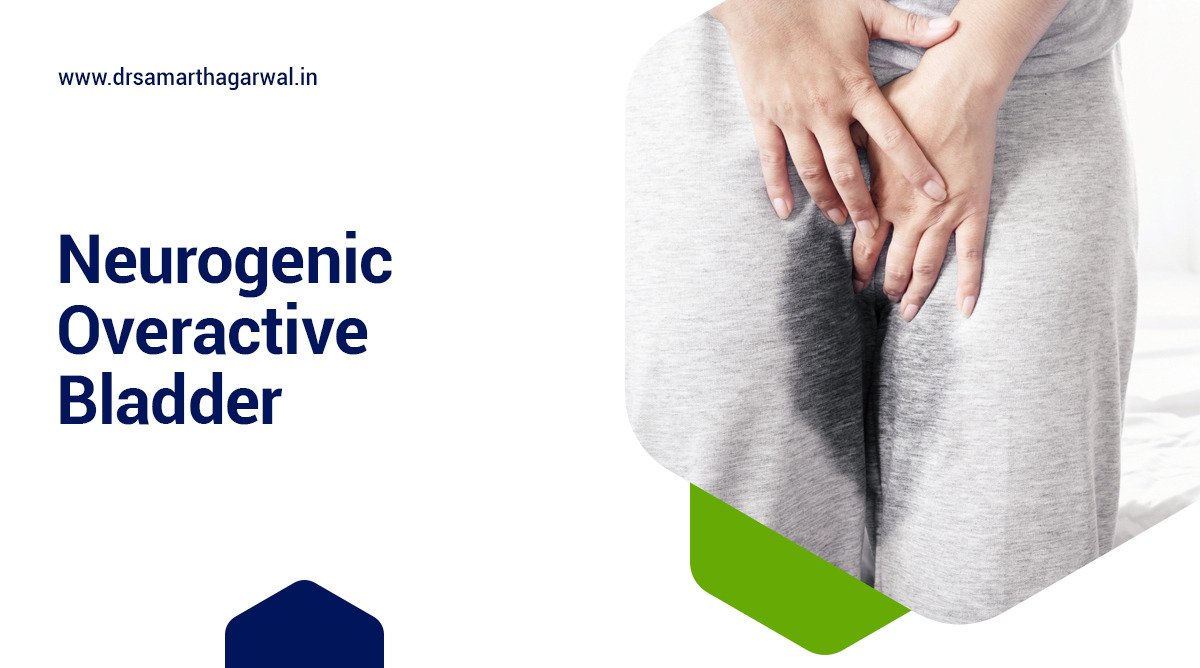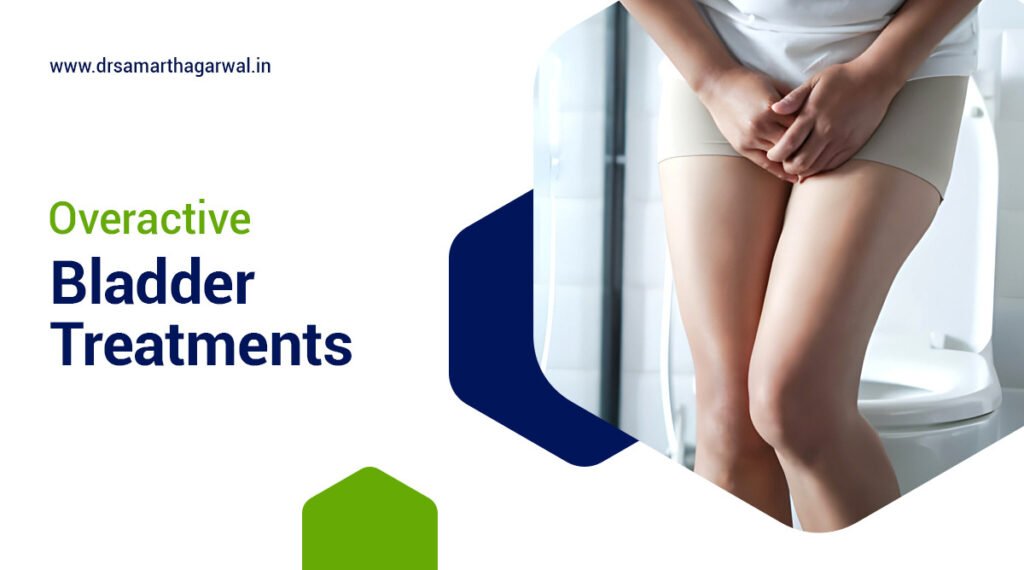Understanding Neurogenic Bladder and Overactive Bladder
Neurogenic bladder, a condition resulting from ineffective communication between the nervous system and the bladder, can present as overactive or underactive. While exact prevalence figures are challenging to pinpoint due to diverse causes and symptoms, it commonly affects individuals with brain, spinal cord, or nerve-related conditions. The overactive form, characterized by frequent and sudden urges to urinate, can be triggered by nervous system damage from ailments like multiple sclerosis or Parkinson’s disease.
Recognizing the signs of a neurogenic bladder is crucial for effective management. Symptoms of the overactive type include frequent urination, loss of bladder control, and difficulty emptying the bladder completely. Treatment typically involves a multifaceted approach encompassing medication, non-surgical methods like catheterization or nerve stimulation, and in some cases, surgical intervention. Emerging treatments such as botulinum toxin injections and sacral neuromodulation offer hope for enhanced symptom relief and improved quality of life for those affected.
In addition to medical interventions, lifestyle adjustments like timed voiding schedules, pelvic floor exercises, and dietary modifications can complement treatment efforts. Long-term management strategies tailored to individual needs, regular monitoring by healthcare professionals, and preventive measures such as controlling diabetes and maintaining a healthy weight play vital roles in sustaining bladder function and overall quality of life for individuals with neurogenic bladder.
How common is neurogenic bladder?
Neurogenic bladder is more prevalent than commonly perceived, especially among individuals with conditions like spinal cord injuries, multiple sclerosis (MS), and spina bifida. Research indicates that a significant proportion of those affected, ranging from young individuals with congenital disabilities to older adults with a mean age of 62.5 years, navigate daily challenges associated with urinary dysfunction. In the US, MS patients alone experience neurogenic bladder rates ranging from 40% to 90%, emphasizing the widespread impact of this condition and the shared experiences of many individuals facing similar struggles.
Neurological bladder dysfunction types
Navigating through the complexities of neurogenic bladder means understanding the different types, each with its own characteristics and challenges.
- Sensory Neurogenic Bladder: Here, the issue lies in the sensory nerves. You might not feel the sensation that signals a full bladder, which can lead to overdistention or incontinence.
- Motor Paralytic Bladder: Damage to the motor nerves can prevent the muscles in the bladder wall from contracting, making it tough to start the flow of urine.
- Uninhibited Neurogenic Bladder: This type causes the bladder to contract without warning, leading to frequent and sometimes uncontrollable urination.
- Reflex Neurogenic Bladder: When the reflex that tells your bladder to empty is disrupted, you might find that your bladder empties without any control or awareness.
- Autonomous Neurogenic Bladder: The bladder muscle (detrusor) might function independently of the central nervous system, causing unpredictable emptying and a range of other symptoms.
With these variations, it’s clear that living with a neurogenic bladder is a personalized experience. Management strategies will be tailored to your specific type, symptoms, and overall health status.
Causes and Risk Factors for Neurogenic Overactive Bladder
Understanding the causes and risk factors for a neurogenic overactive bladder can help in early identification and management of the condition. Let’s explore what could potentially land you in these choppy waters.
Root Causes: The culprits behind neurogenic overactive bladder are usually conditions that impact your nervous system. These might include:
- Spinal Cord Injuries: Traumas that disrupt the communication pathways between your brain and bladder.
- Neurological Disorders: Multiple sclerosis and Parkinson’s disease, where nerve degeneration is a central feature.
- Cerebral Events: Strokes can damage the parts of your brain responsible for bladder control.
Risk Factors: Your chances of developing a neurogenic overactive bladder increase with:
- Aging: As you age, the risk of both neurological conditions and bladder issues tends to go up.
- Chronic Health Conditions: Diabetes and other chronic diseases can damage nerves over time.
- Lifestyle: Behaviors like excessive alcohol consumption can exacerbate bladder problems.
By being aware of these triggers, you can be proactive about seeking medical advice if needed and reducing risks where possible.
Overactive Bladder Therapy Options
Signs and symptoms of neurogenic bladder
Recognizing the signs and symptoms of neurogenic bladder is crucial for early intervention and treatment. If you’re navigating these turbulent waters, here’s what to watch out for:
- Incontinence: Difficulty holding urine or experiencing leaks can be startling signs.
- Frequency: You might find yourself making countless trips to the restroom.
- Urgency: That sudden, compelling urge to go “right now” can disrupt your day.
Now imagine:
- Incomplete Emptying: Feeling like your bladder’s still partly full even after you’ve just gone.
- Weak Stream: A dribbling or straining flow that’s frustratingly slow.
- No Sensation: Lacking the sensation of a full bladder might lead to accidental leakage.
Be Alert: Symptoms might also include recurrent UTIs or kidney stones, pointing to complications from the condition.
Remember, these symptoms not only affect your physical health but can also weigh on your emotional well-being. It’s essential not to brush them off and consult healthcare providers for a proper diagnosis.
Neurogenic bladder dysfunction treatment
Medications and Non-Surgical Approaches
When you’re facing a neurogenic bladder, medications and non-surgical approaches can be a beacon of hope. Let’s shine a light on these options:
Medications: Imagine a pharmacological arsenal at your disposal, designed to relax and regulate your bladder’s activities:
- Anticholinergic Medications: These are the calvary against bladder spasms, bringing some much-needed peace and quiet.
- Beta-3 Agonists: They work like a dimmer switch, turning down the overactivity without causing retention.
- Alpha-blockers: Think of these as oil in the gears, easing the flow of urine from an underactive bladder.
Non-Surgical Treatments: When pills aren’t enough, these approaches step in, providing a variety of ways to tame the wild bladder without going under the knife:
- Intermittent Catheterization: It’s like a routine drain, ensuring your bladder empties at regular intervals.
- Pelvic Floor Therapy: Strengthening maneuvers called Kegels can help some regain a level of control.
- Electrical Stimulation: This therapy uses gentle electric currents to get nerves and muscles talking again.
Whether you’re popping a pill or plugged into an electrical pulse, these methods aim to restore harmony to your urinary tract and improve your quality of life.
New treatments for neurogenic bladder
Stay hopeful because the world of neurogenic bladder treatment is brimming with innovation. Here are a few of the newcomers likely to change the game:
- Sacral Neuromodulation (SNM): Think of SNM as a pacemaker for your bladder, not your heart. It sends electrical pulses to the sacral nerve, which helps regulate bladder activity.
- Botulinum Toxin Injections: These injections work by relaxing your bladder muscle, reducing urgency and frequency. It’s like having a snooze button for your bladder’s overactivity.
- Stem Cell Research: While still at the frontier, stem cell therapy holds promise for repairing nerve damage and restoring bladder function.
Each of these therapies heralds a potential leap forward in managing symptoms that were once thought to be life sentences of discomfort and inconvenience.

Contact Dr. Samarth Agarwal if you have any questions or concerns about your Urinary health!
Lifestyle Adjustments and Home Remedies
Sometimes, the most profound impacts on health come from the small changes made at home. For those with a neurogenic bladder, lifestyle adjustments and home remedies can be key players in managing the condition:
- Dietary Tweaks: Wave goodbye to bladder irritants like caffeine and alcohol. Hello, hydration and bladder-friendly foods!
- Fluid Management: It’s a balancing act — drinking enough to stay hydrated but not so much that your bladder feels overwhelmed.
- Timed Voiding: By the clock, you go. This helps in retraining your bladder, reducing accidents.
- Pelvic Floor Exercises: Strengthening these muscles can help you gain more control and can reduce leakage episodes.
Integrating these simple yet effective strategies into your routine can help you regain control over your bladder and your life.
Strategies for Sustained Management and Quality of Life
Long-term management of a neurogenic bladder isn’t just about treatment, it’s about enhancing the quality of your life. Here are some key strategies:
- Regular Follow-Ups: Keep up with your healthcare team to tweak treatments as needed.
- Personal Tracking: Monitor your bladder habits with a diary — it can help in managing triggers.
- Support Systems: Lean on support groups and connect with others who understand your journey.
- Education: The more you know about your condition, the better equipped you’ll be to handle it.
- Self-Care: Never underestimate the power of self-care — managing stress is vital for overall well-being.
By embracing these approaches, maintaining a positive outlook, and working closely with healthcare professionals, you can live a fulfilling life with neurogenic bladder.
Common Symptoms of Urinary Problems
Preventive Measures and Long-Term Management
Prevention is the best defense. When it comes to neurogenic bladder, here’s how to shield yourself and ensure smooth sailing in the long run:
- Manage Underlying Conditions: Keep tabs on chronic conditions that could impact bladder function, like diabetes.
- Healthy Lifestyle: Embrace exercise, balanced nutrition, and weight management to support nerve health.
- Avoid Risky Behavior: Limit activities that could lead to injuries affecting the spinal cord or brain.
As for those already on the neurogenic bladder journey:
- Adherence to Treatment Plans: Consistency is key — stick with the treatment regimen crafted by your healthcare team.
- Adaptive Equipment: Explore gadgets and tools that aid in mobility and bathroom access to ease daily life.
- Home Safety: Prevent falls and accidents at home that could worsen your condition.
By crafting a vigilant long-term management plan and adopting preventative practices, you can navigate life with a neurogenic bladder with greater ease and comfort.
FAQ
How do you fix nerve damage in the bladder?
To address nerve damage in the bladder, it’s a multipronged approach. Treatment may include medications to improve nerve signaling, catheterization to manage emptying, and advanced options like sacral neuromodulation. Work closely with healthcare providers to tailor the best plan for you.
What happens when the bladder stops working?
If the bladder stops working due to nerve damage, it can result in difficulty emptying urine or incontinence. Medical interventions like catheterization or medications can help manage the condition and alleviate symptoms. Consulting with a healthcare provider is essential for proper care.
Why can’t feel when I need to pee?
If you can’t feel when you need to pee, this could be a symptom of underactive bladder due to nerve damage affecting sensation. It’s important to discuss this with a doctor to explore potential causes and appropriate treatments tailored to your condition.
Can a neurogenic bladder be cured?
Currently, there’s no cure for neurogenic bladder, but symptoms can be effectively managed with medications, therapies, and lifestyle changes. These treatments can greatly improve quality of life and prevent potential complications associated with the condition.





